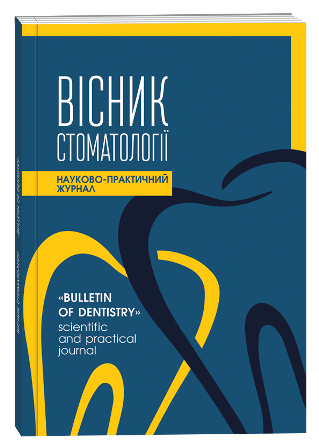INCREASING THE ANTITUMOR EFFECT IN THE TREATMENT OF ORAL CANCER
DOI:
https://doi.org/10.35220/2078-8916-2024-52-2.6Keywords:
hyperglycemia, cancer, lactate, Poly chemotherapy.Abstract
Hyperglycemia, based on a decrease in the pH of tumor tissue, has taken a strong place among methods of enhancing radiation and chemotherapy. Over the past 10 years, the scientific literature presents works on the use of intra-arterial glucose infusion in clinical practice in chemoradiotherapy of malignant tumors of various localizations. There are malignant tumors with low sensitivity to chemotherapy. A cancerous tumor, according to the Crabtree effect, functions in the body as a "trap" of glucose. Cancer cells consume glucose at a rate incomparably higher than that at which it enters the tumor. Purpose of the study. Study of changes in the lactate content in tumor tissue before and after the creation of a regional hyperglycemia regime. Materials and methods of research. The study was based on biopsy material from 8 patients with squamous cell carcinoma of the oral mucosa of various degrees of differentiation. Among all patients, there were 6 men and 1 woman aged 45 to 69 years. In each of the patients, the material was selected three times by incisional biopsy. Selection of the tumor tissue site was performed before the start of treatment and immediately after the end of the glucose infusion, then 1 hour after the end of the infusion. To obtain objective results at the clinical stage of the study, the following conditions were observed: the size of the cut-off area of the tumor should be at least 7-10 mm in diameter; the cut-off tumor tissue was immediately immersed in a dish with liquid nitrogen. Results and their discussion. The release of lactate by the tumor leads to "acidification", that is, a decrease in the pH inside and around the cells. Lactate is both an indicator of glucose metabolism by the tumor and a criterion for increasing the chemosensitivity of tumor cells. It was found that 1 hour after the end of the glucose infusion, the lactate content in the tumor tissue increased 6-7 times. This indicates a significant acidification of the tumor tissue under the influence of glucose. We have received direct confirmation that without ligation of the veins that divert blood from the area of the tumor, it is impossible to count on any prolonged contact of the intra-arterial drug with the tumor tissue. Conclusion. The lactate content in the tumor tissue increased 6-7 times one hour after the infusion of glucose solution, which indicates significant acidification of the tumor tissue, which can modify the effect of antitumor drugs.
References
Жаврид Е.А., Осинський С.П., Фрадкін С.З. Гіпертермія і гіперглікемія в онкології. Київ: Наукова думка, 1987. 256 с.
Галахін К.А., Процик В.С., Лунгу В.І. Патоморфоз карциноми язика при внутрішньоартеріальній регіонарній гіперглікемії та поліхіміотерапії. Український хіміотерапевтичний журнал. 2000. № 3. С. 54-56
Галахин К.А., Курик Е.Г. Лікувальний патоморфоз злоякісних пухлин травного тракту. Київ: Книга-плюс, 2000. 175 с.
Лунгу В. І., Лунгу К. В. Ефективність застосування внутрішньоартеріальної регіонарної гіперглікемії при лікуванні раку слизової оболонки порожнини рота. Інтегративна Антропологія. 2018. № 1 (31) С. 63-65 URL: https://files.odmu.edu.ua/anthropology/2018/01/a181_63.pdf
Yixin Liu, Sheng Tian, Biao Ning, Tianhe Huang, Yi Li, Yongchang Wei Stress and cancer: The mechanisms of immune dysregulation and management Front Immunol. 2022; 13: 1032294. doi: 10.3389/fimmu.2022.1032294









